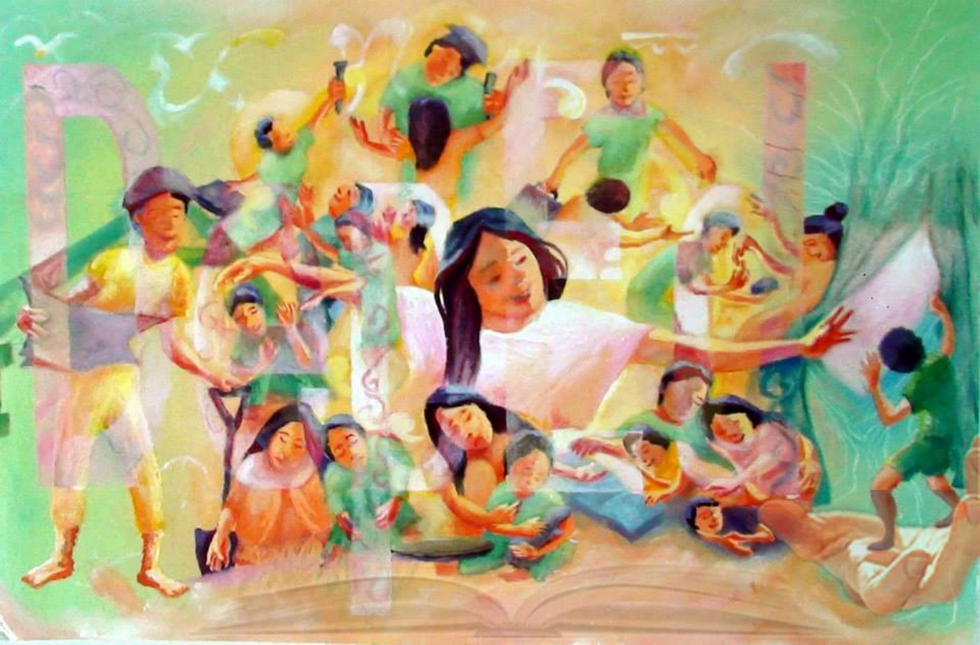‘Tisoy’ is the modification of the Spanish word ‘mestizo,’ meaning ‘mixed,’ as adopted to Tagalog speech patterns. It refers to those who are half Filipino and half something from outside those long-suffering isles, and in these times usually half American white, whatever that may happen to be.
So I am tisoy, child of a Filipina mother and an American father. No, I am no military brat, as there were a good few tisoy made during World War II. I was born in 1996 a decade and a half or so after my parents met in high school in Wisconsin. My mother was the child of an S. C. Johnson executive who was brought to that Wisconsin town for work.
For one, it makes the question “what is your heritage?” somewhat hard to answer, for both white Americans and Filipinos have a great many nations within their genetics. Through my father, I have the blood of Scots-Irish frontiersmen and French Huguenots and of 19th century German immigrants.
Through my mother, I have not only the blood of native Filipinos of Luzon, but also Spanish conquistadores and Chinese merchants. It goes to show, in my mind, the somewhat illusory quality of a ‘normal’ American or a ‘normal’ Filipino, for both are nations that were created out of colonialism and had people from all walks of life who spoke different languages and followed different faiths. Those people intermingled and formed tapestries, and tisoy like myself are therefore even more colorful tapestries.
In terms of looks, people think my own phenotype is ambiguous. I’ve gotten Chinese before, as well as various different variants of Latin America. Some people have, to my pleasant surprise, have seen me for my Filipino heritage. We have a look, us pinoys; a saucy brown skin with jet-black hair. Being half white, my skin is slightly darker than most white people, but the hair remains jet-black.
Growing up was being divided between two cultures. Every Sunday morning we’d have bacon, scrambled eggs, and rice for breakfast, for we ate a lot of rice. We had picadillo and pancit and lumpia on a regular basis, and pandesal, not white or wheat or sourdough, was my bread of choice.
Family gatherings with the elder Filipino family were often somewhat strange from my vantage point. I grew up speaking solely English with the occasional tagalog word thrown in there, usually when being lighthearted. When in Wisconsin or New York for reunions, I was thrown into a deluge of words I could not understand.
I could understand some, for a lot of Filipino vernacular is not Tagalog but Taglish, with the words of its latest colonizer, as well as those of the first, thrown into the potpourri of Manila area speech. My grandparents would now and then ask my sister and me things in Tagalog, and we would respond confusedly. They would switch to English without any irritation, but it made clear the distinction between those from Luzon and those from Greater Washington.
Being tisoy therefore is the strange albeit natural result of cultures interacting, and of colonialism and imperialism and things of that sort; my mother never denied American atrocities in the Philippines, but she like many other Filipinos said the Japanese were so much worse. Does this mean our nature is therefore a betrayal to the Filipino homeland? I would say no.
There was once a great Filipino political cartoon about being ‘pure-ipino,’ with a proud declaration thereof preceded by several different empires, including the Spanish, the Japanese, the Americans, and the various states that existed before colonialism, staking their flags into the soil of Pearl of the Orient. Likewise, Americans are a diverse people of different origins, and the notion of ‘true American’ beyond being born in the country or being naturalized is one that is rather nebulous. So therefore I think it is fair to say there is no betrayal involved in existing between these two cultures; indeed, it’s only the next step.


















